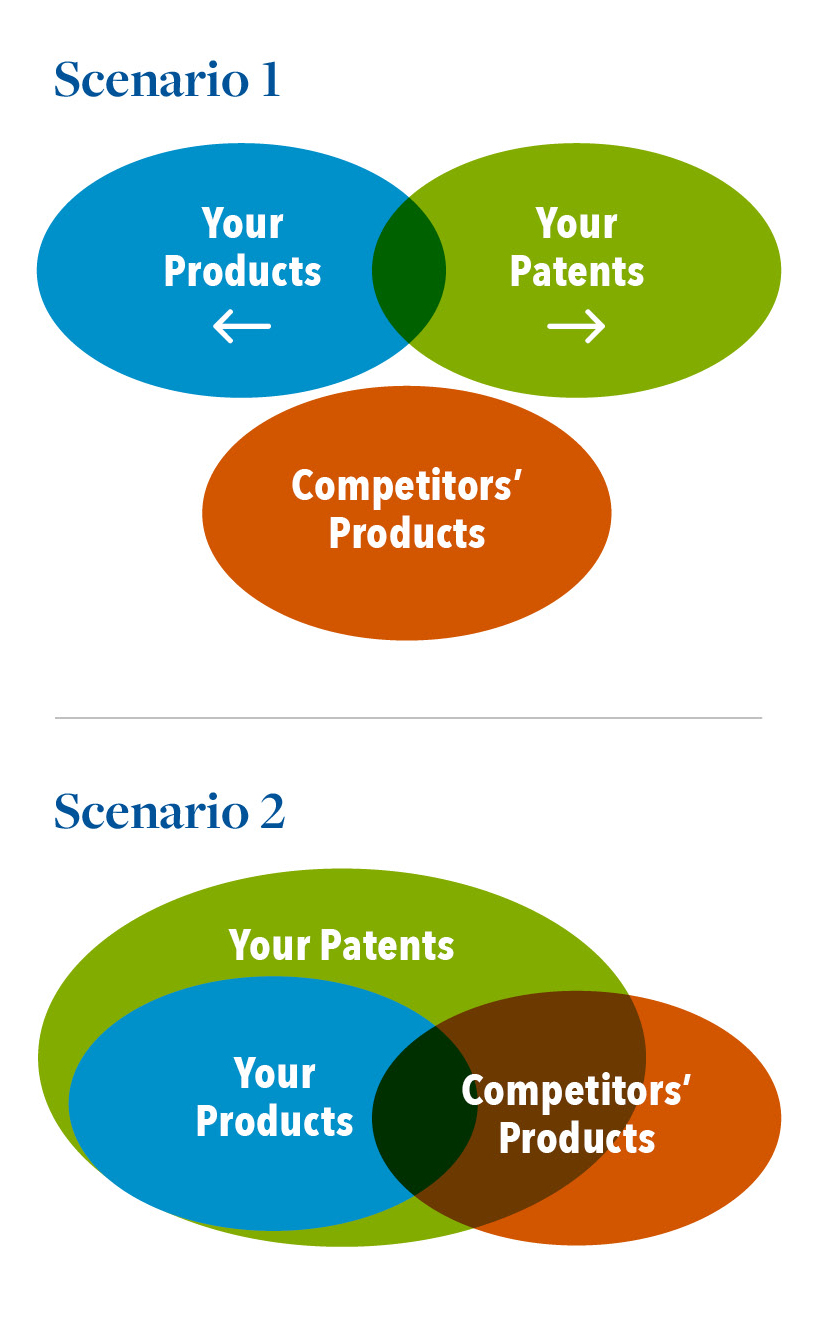Critical Advice on Crafting a Successful IP Strategy in an Evolving Legal Environment

Over the past 20 years, there have been significant changes to the intellectual property ecosystem for obtaining and enforcing U.S. patents. These changes, along with market conditions and the continuing importance of protecting and leveraging intangible assets, point to a need for companies to have a comprehensive IP strategy.
An IP strategy does not have to be complicated or expensive, but it does need to be deliberate in order to ensure that the company’s investment in patents results in strategic assets that provide value to the company.
Ever since the term “patent troll” was introduced into the IP lexicon in the late 1990’s, followed closely by calls for “patent reform”, the value of a U.S. patent has been systematically reduced whether by legislation, court rulings or regulations. The changes have increased uncertainty and pressure on patent applicants by demanding more precision during the drafting process to meet the requirements imposed by the ever-changing caselaw. At the same time, patent prosecution has become subject to bidding among law firms — and to a certain extent, commoditization — as companies impose fixed fees to control costs.
TIMELINE OF PATENT DEVALUATION
Even a cursory review of recent U.S. Supreme Court caselaw over the last 20 years demonstrates the trend of increased pressure on patent applicants and reduced patent value.
2002: The Festo case severely limited a patentee’s ability to use the doctrine of equivalents to demonstrate infringement, thereby increasing the pressure on applicants to avoid the use of claim amendments that could give away important doctrine-of-equivalents claim scope.
2006: The eBay case eliminated the practice of a patentee automatically obtaining an injunction after a finding of infringement, which reduced a patentee’s leverage in negotiating a license or settlement.
2007: The KSR decision relaxed the standard to find a patent invalid
as obvious.
2014: The Alice decision reduced the number of inventions considered patentable subject matter, which instantaneously called into question the validity of thousands of already issued patents.
2014: The Limelight decision made it more difficult to show that a patent was infringed in situations where multiple companies were involved in the infringement.
2014: The Nautilus case changed the standard for invalidating a patent for indefiniteness.
2017: The TC Heartland decision reduced the patentee’s venue choices.
It wasn’t just the judicial branch inserting uncertainty and risk into the ecosystem.
In one of the rare instances where Congress weighed in on the patent system by passing the 2011 America Invents Act, lawmakers created a brand new forum where potential infringers can challenge the validity of issued patents introducing the inter partes review procedure. The IPR procedure allows an administrative challenge to patent validity in the U.S. Patent and Trademark Office and further shifted leverage from the patentee to a party challenging validity. In the last 10 years, the pendulum has swung slightly back toward the patentee, but the IPR process has been described by commentators as a “patent death squad”.
CRITICAL STRATEGIC CONSIDERATIONS
Notwithstanding all these changes, companies continue to invest in U.S. patent protection, and for good reason. The current patent landscape represents the pendulum swinging decidedly in one direction. But it will swing back and already has. The effects on innovation caused by narrowing the scope of patent rights will compel this correction.
When it does, those companies that developed, and executed on, the right IP strategy will be even better positioned in the marketplace to succeed. The two most important things a company can do to ensure it is generating meaningful IP are:
1) Align business and IP strategies
2) Base IP strategy on a solid understanding of its competitive landscape
Every patent should support a business objective. It may sound elementary, but unless care is taken to ensure that business objectives and strategies are layered into patent strategy discussions, over time a company’s filing strategy can go left while the business goes right.
In the first figure below, the first scenario illustrates this divergence, which can result in patents that are, at best, non-core to the business with minimal strategic value. At worst, such patents are a waste of money with no likelihood of monetizing.

There are multiple things a company can do to drive toward Scenario 2, in which the company’s portfolio both protects its own products as well as provides strategic value and potentially a source of revenue by covering other products in the marketplace.
The key to maintaining alignment between business strategy and IP strategy is to establish a robust process for reviewing both new inventions
and the existing patent portfolio.
To be effective, the process should be recurring and include input from multiple stakeholders, including not only the technical and legal functions but depending on the circumstances, marketing, sales, and business unit leadership, as shown in the figure immediately below.
The graphic below shows an example of the roles, functions and inputs that are key components to generating and maintaining strategic intellectual property and IP investment. Historically, the intellectual property strategy was implemented by only R&D and legal, but over time, those teams become less connected to the company or business unit and without a forced feedback loop, can often result in a divergence between business strategy and filing strategy.

As noted, the IP strategy process should not only address new inventions but should also systematically review the existing portfolio alongside the business unit or company’s roadmap. Given the cost of prosecution — particularly foreign prosecution — and maintenance fees, companies can save a significant amount of money and time by thinning the herd. Pursue only the intellectual property that supports a business or strategic need.
Another key to ensuring that companies realize a return on IP investment is to create a strategy built on a solid understanding of the competitive patent landscape. A good patent landscape serves multiple purposes:
- Helping companies understand the prior art
- Supplying a type of competitive intelligence exercise for the business to understand how the company’s portfolio compares to those of its competitors, suppliers and customers
- Identifying competitive investment, risks and trends that can be fed back into the company’s business and IP strategy
It is an interesting time in this country in terms of intellectual property protection. On the one hand, court decisions and legislative and regulatory changes continue to increase the pressure on patentees and patent attorneys in the application process. On the other hand, cost pressures have led to fixed fees and almost a commoditization of the process. To be successful in generating meaningful and valuable intellectual property, a comprehensive IP strategy is key.
Developing this strategy requires a greater understanding of where a company’s IP is presently directed (on end products or raw materials, on manufacturing know-how or end-user applications) and where competitors have invested their IP dollars. One must have an understanding of what market space is available or ripe for innovation, and evaluating how allocating or re-directing IP investments can best achieve their goals. The net sum of all of this is that companies that continue to invest in IP should also be investing in a comprehensive strategy to ensure that their IP portfolios and investments will provide the right strategic benefits and monetization opportunities.




